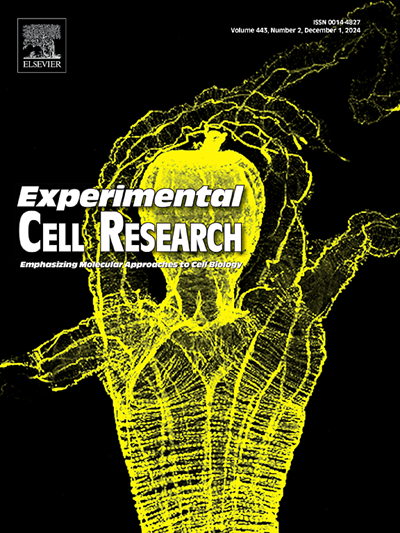Research progress of connexin 43 mediated gap junction communication regulating bone metabolism in glucocorticoid-induced osteonecrosis of the femoral head
IF 3.3
3区 生物学
Q3 CELL BIOLOGY
引用次数: 0
Abstract
Osteonecrosis of the femoral head (ONFH) is a refractory orthopedic disease that commonly affects young and middle-aged individuals. Long-term and high-dose use of glucocorticoids (GCs) is one of the main causes. Currently, the pathological mechanism of GCs-induced ONFH remains unclear, which poses difficulties for clinical prevention and treatment. This article focuses on reviewing the roles of gap junctions (GJs) and connexin 43 (Cx43) in GCs-induced ONFH. Under normal circumstances, cells in bone tissue form a network structure through GJs to maintain bone metabolic balance. However, GCs can obstruct the normal connections and signal transmission between bone tissue cells, leading to bone metabolic imbalance and triggering ONFH. As a key component of GJs in bone tissue, Cx43 is of great significance in bone metabolism. It not only participates in the construction of the osteocyte network but also regulates osteocyte activity, osteoblast differentiation, and osteogenic activities. Meanwhile, in vascular endothelial cells, Cx43 plays an important role in angiogenesis and maintaining vascular homeostasis, and is closely related to the vascularization of bone tissue. In addition, Cx43 is associated with the release of prostaglandin E2 (PGE2). GCs can inhibit the activity of Cx43, reduce the release of PGE2, and disrupt the balance of bone metabolism. Studies have shown that measuring changes in the expression level of Cx43 is expected to become an early diagnostic biomarker for GCs-induced ONFH. Enhancing its expression through small - molecule drugs, biological agents, and gene therapy may be potential treatment approaches for ONFH. This article proposes the PI3K/Akt/GSK3β/β-catenin pathway and conducts research on the regulatory mechanism of Cx43-mediated GJ-based intercellular communication, aiming to provide new ideas for the treatment of ONFH and bone metabolism-related diseases.
糖皮质激素致股骨头坏死中连接蛋白43介导间隙连接通讯调节骨代谢的研究进展
股骨头坏死(ONFH)是一种顽固性骨科疾病,常见于年轻人和中年人。长期高剂量使用糖皮质激素(GCs)是主要原因之一。目前,gcs诱导ONFH的病理机制尚不清楚,给临床防治带来困难。本文就间隙连接(GJs)和连接蛋白43 (Cx43)在gcs诱导的ONFH中的作用进行综述。正常情况下,骨组织细胞通过GJs形成网状结构,维持骨代谢平衡。然而,GCs会阻碍骨组织细胞之间的正常连接和信号传递,导致骨代谢失衡,引发ONFH。Cx43作为骨组织中GJs的关键成分,在骨代谢中具有重要意义。它不仅参与骨细胞网络的构建,还参与调控骨细胞活性、成骨细胞分化和成骨活性。同时,在血管内皮细胞中,Cx43在血管生成和维持血管稳态中发挥重要作用,与骨组织的血管化密切相关。此外,Cx43与前列腺素E2 (PGE2)的释放有关。GCs可以抑制Cx43的活性,减少PGE2的释放,破坏骨代谢平衡。研究表明,测量Cx43表达水平的变化有望成为gcs诱导ONFH的早期诊断生物标志物。通过小分子药物、生物制剂和基因治疗增强其表达可能是治疗ONFH的潜在途径。本文提出PI3K/Akt/GSK3β/β-catenin通路,研究cx43介导的gj细胞间通讯的调控机制,旨在为ONFH及骨代谢相关疾病的治疗提供新思路。
本文章由计算机程序翻译,如有差异,请以英文原文为准。
求助全文
约1分钟内获得全文
求助全文
来源期刊

Experimental cell research
医学-细胞生物学
CiteScore
7.20
自引率
0.00%
发文量
295
审稿时长
30 days
期刊介绍:
Our scope includes but is not limited to areas such as: Chromosome biology; Chromatin and epigenetics; DNA repair; Gene regulation; Nuclear import-export; RNA processing; Non-coding RNAs; Organelle biology; The cytoskeleton; Intracellular trafficking; Cell-cell and cell-matrix interactions; Cell motility and migration; Cell proliferation; Cellular differentiation; Signal transduction; Programmed cell death.
 求助内容:
求助内容: 应助结果提醒方式:
应助结果提醒方式:


